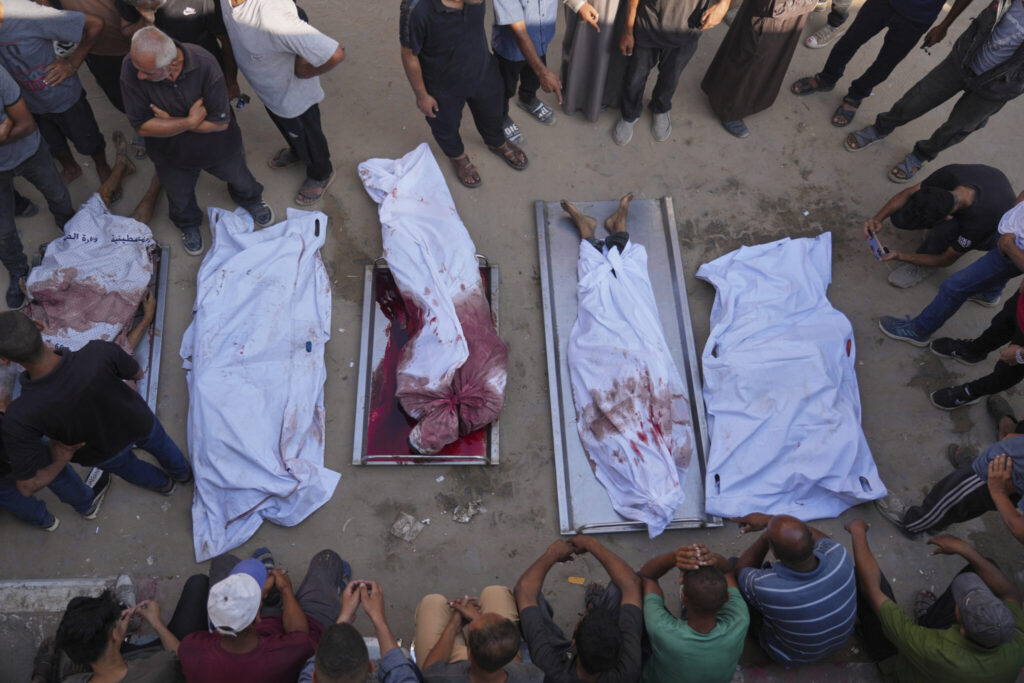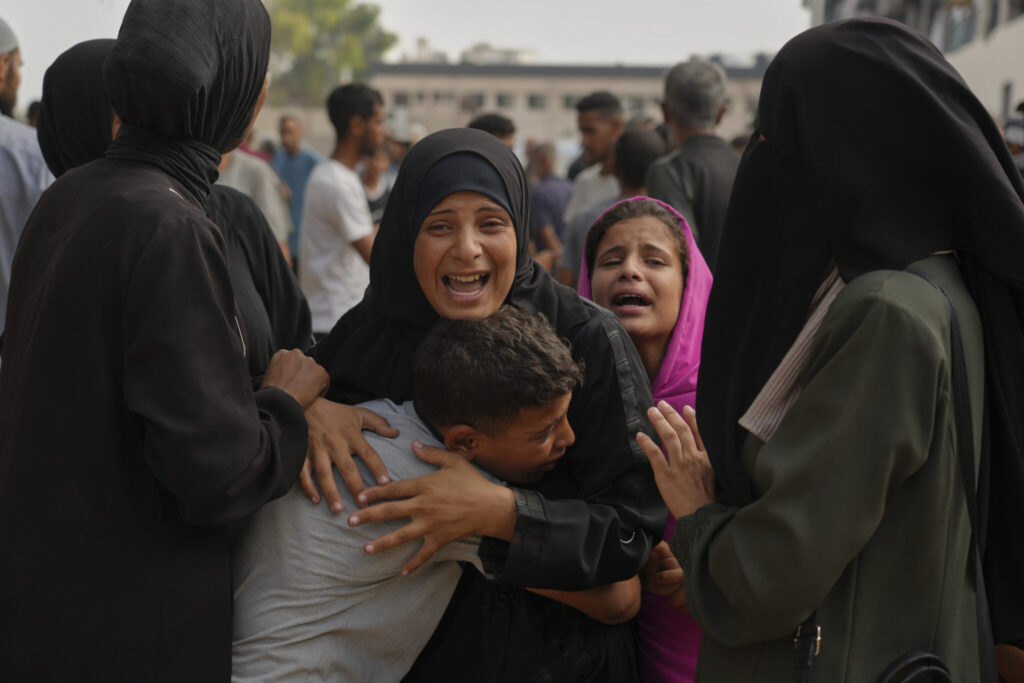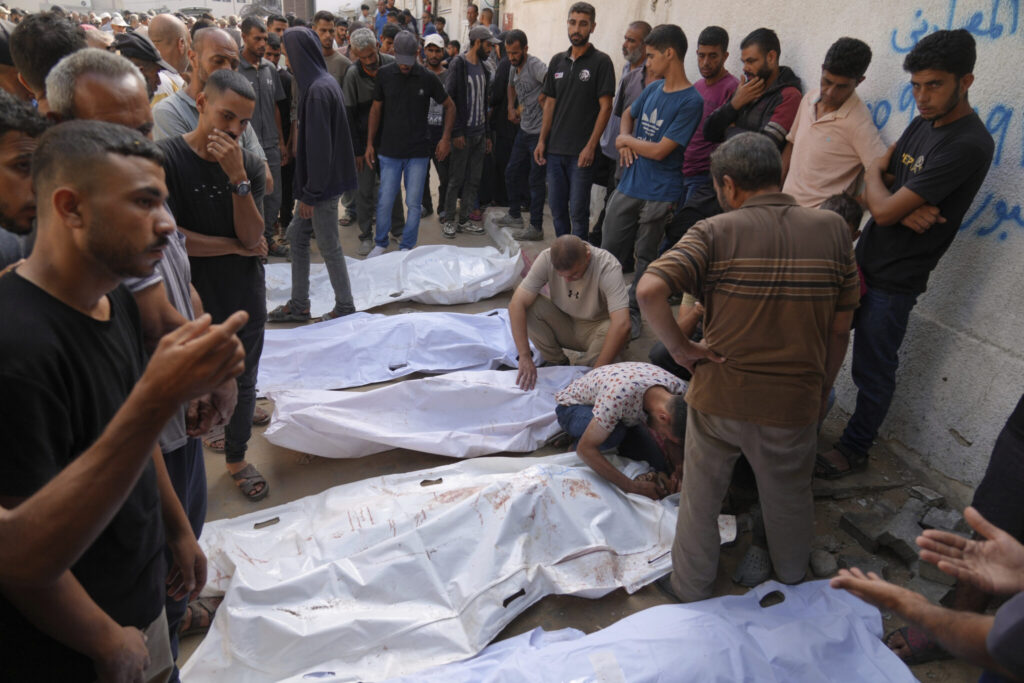Netanyahu Advances Gaza Operation Despite Global Condemnation/ Newslooks/ WASHINGTON/ J. Mansour/ Morning Edition/ Despite internal protests and international outcry, Israeli Prime Minister Benjamin Netanyahu is pushing forward with a new military operation in Gaza City. The escalation includes reservist call-ups and ongoing airstrikes, amid growing concerns about civilian casualties. Both Gaza and Israeli cities saw protests calling for an end to the violence.

Gaza City Offensive Quick Looks
- Netanyahu proceeds with expanded Gaza City assault despite criticism.
- 60,000 reservists called up; 20,000 extended to support operations.
- At least 36 Palestinians killed Thursday; toll from prior strikes rises.
- UN, protestors in Gaza and Israel demand ceasefire, hostage deal.
- Over 62,000 Palestinians reported killed since the conflict began.
- Airstrikes hit aid seekers, schools, and makeshift refugee camps.
- Israel says Hamas still active, regrouping in key zones.
- Hostage families in Tel Aviv decry the expanded assault.
- Gaza infrastructure, homes, and cultural sites nearly obliterated.

Deep Look: Netanyahu Pushes Ahead With Gaza Offensive Despite Mounting Opposition
DEIR AL-BALAH, Gaza Strip (AP) — Prime Minister Benjamin Netanyahu is moving forward with a major military operation in Gaza City, despite growing opposition from Israeli citizens, human rights organizations, and the international community.
On Thursday, the Israeli military began contacting medical and international agencies in northern Gaza, warning them to evacuate ahead of an expanded ground operation. This coincided with the mobilization of 60,000 new reservists and the extension of 20,000 currently serving troops, in preparation for the upcoming offensive.
The final go-ahead for the operation is expected during a security cabinet meeting Thursday night, according to an Israeli official who spoke on condition of anonymity due to lack of authorization.
Offensive Targets Regrouping Hamas Fighters
Although Israeli forces have eliminated much of Hamas’ senior leadership, military officials say the group is regrouping and still launching attacks, including renewed rocket fire. Troops are already deployed in Gaza City’s Zeitoun neighborhood and Jabaliya refugee camp, laying the groundwork for what may be an imminent large-scale operation.
The operation has stirred international concern, especially due to Israel’s continued restriction of food and medical aid into Gaza. Humanitarian organizations warn of worsening conditions for the over 2 million civilians, many of whom are displaced multiple times over.
UN, Protesters Call for Ceasefire
At the Tokyo International Conference on African Development, UN Secretary-General António Guterres once again called for an immediate ceasefire in Gaza.
“We must avoid the massive death and destruction that a military operation against Gaza City would inevitably cause,” Guterres said.
Meanwhile, protests erupted in both Gaza and Tel Aviv. In Gaza City, displaced residents gathered among ruins, waving signs and chanting slogans. Women and children held signs like “Stop the war” and “Save Gaza”, while Palestinian music played in the background.
“We don’t want to migrate. Enough destruction,” said Bisan Ghazal, a woman displaced from eastern Gaza.
“We’ve lost more than 10% of our population, 85% of our buildings, and our cultural heritage,” added Amjad Al-Shawa, director of the Palestinian NGO Network.
In Tel Aviv, families of Israeli hostages condemned Netanyahu’s plan to escalate. Around 50 hostages remain in Gaza, with only 20 believed to be alive. Protesters accused the government of sacrificing hostages for military gains.
“Forty-two hostages were murdered in captivity due to delays in negotiations,” said Dalia Cusnir, whose brother-in-law remains captive.
“Enough sacrificing the hostages, the soldiers, the evacuees,” said Bar Goddard, whose father’s body is still held by Hamas.
Additional protests were planned for Thursday night.
Death Toll Surges in Gaza
Hospitals across Gaza reported at least 36 deaths from Israeli airstrikes on Thursday alone, with an additional 39 fatalities from strikes the day before. According to Al Awda Hospital, 19 were killed in central Gaza — including aid seekers and displaced persons sheltering in schools. Nasser Hospital in the south reported nine deaths at an aid distribution site and eight near Khan Younis.
In Deir al-Balah, a central city designated as a “safe zone,” airstrikes wiped out over 100 tents of displaced families, according to nearby Al Aqsa Hospital. Fires quickly consumed the makeshift camp, leaving families scrambling to save what little remained.
“We had five minutes to pack. Then they bombed the camp,” said Mohammad Kahlout, displaced from northern Gaza. “We are civilians. What is our fault?”
The Palestinian Health Ministry, part of the Hamas-run government, reported that total fatalities have reached 62,192, with 271 deaths from starvation or malnutrition, including 112 children. The ministry, though under Hamas, is considered a reliable source by the UN and independent monitors.
War Background
The conflict began on October 7, 2023, when Hamas launched a deadly attack inside Israel, killing around 1,200 people, mostly civilians, and abducting 251 hostages. While many hostages have been freed through negotiations and ceasefires, Hamas insists that the remaining captives will only be released in exchange for a permanent ceasefire and full Israeli withdrawal from Gaza.
Israel maintains that Hamas embeds military infrastructure in civilian areas, justifying its strikes on populated zones. However, critics argue that the scale of civilian casualties and destruction far outweighs any strategic gains.







